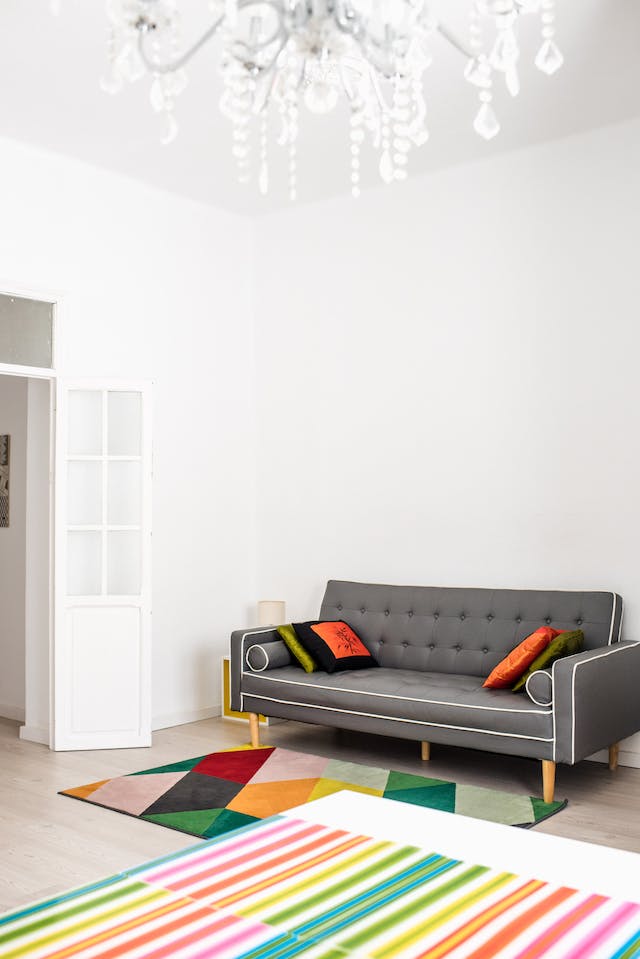A lot of people prefer to have carpeted floors at home due to their ability to give a cushiony, warm surface underfoot. Carpets also have a lot of benefits, and it is well-suited to certain areas of the house more so than some types of hardwood floors, tiles, or laminate. Carpet flooring can add softness to a room, both functionally and aesthetically. With this, it is perfect for bedrooms and playrooms, to give a warm and cozy feeling against bare feetand a soft and cushiony surface for toddlers to crawl on and fall down on.
When choosing a carpet, there are two primary characteristics that you need to consider, which are the type of fiber used in the construction and the pile or how the loops of fiber are attached to the carpet backing. This way, you’ll be able to know the comfort of the carpet, how it feels underfoot, and how sturdy it is.
If you are looking into buying a carpet for your home, there are a lot of choices out there. However, it is sometimes challenging to choose the best one with a number of options. But no worries because we are here to help you. Today, we are giving you the ultimate guide to the different types of carpet.
Different Carpet Fabrics
Carpets can be made using different materials. The type of materials used will play a key factor in the quality of the carpet and various features it might have, including stain resistance. Carpets are commonly made from one or a combination of fabrics. Here are the different carpet fabrics you can choose from:
Nylon
Many carpets are made from nylon, with nylon carpets accounting for up to 90% of all carpets used in residential settings. The popularity of nylon carpets is due to several factors. It is reasonably priced, considering how long they can last. Most of the time, nylon carpets can last up to 15 years. It might be more expensive compared to synthetic carpets, but it costs less than wool carpets. They have good resistance to abrasion, staining, mold, and mildew.
Nylon carpets also dye well and can hold their color, making them available in a huge choice of colors. It is soft and a comfortable option for beneath your feet. The only downside of nylon carpet is that it can produce static energy.
Olefin
Olefin is a polypropylene compound. It is usually used as a synthetic substitute for wool because its fibers look and feel similar to natural wool but more cost-effective. This carpet fabric is popular in commercial properties. It is slightly less expensive compared to nylon, but it does not perform quite as well. It is resistant to staining, but it holds onto oils when soiled where dirt can cling.
Even though olefin fiber is prone to soiling, it cleans well, and some types can even be bleached. It is also strong and holds up well against high levels of foot traffic. However, sun exposure can damage it. Therefore, never use this carpet fabric in very bright rooms.
Wool
Wool is a natural material, and it comes with a lot of benefits. However, this carpet fabric comes at a premium. High-quality wool has lots of intricately woven fibers, making it resistant to staining. It is the softest type of carpet fabric in the market, and it feels luxurious on bare feet. It is perfect for those who have allergiesbecause they are made without using chemicals and additives.
This is not a very common choice of carpet material because it is expensive. Also, it does not perform well against mold and mildew. This means that it is incompatible for areas where humidity is high or where there are moisture problems.
Acrylic
This is the most affordable type of carpet, and it is a great choice in some rooms but not others. It is resistant to staining, mold, mildew, and static. This material is soft and can replicate the feel of natural wool because its fibers are very similar. Sometimes, acrylic carpets are marketed as synthetic wool. It is perfect for children’s playrooms because it is soft and stands up well to staining. It is also great for bedrooms and basements.
The downside of acrylic carpets is when it comes to durability. It is not a very strong type of carpet and won’t last as long as nylon carpets. It also does not stand up well to lots of foot traffic. Therefore, you need to avoid putting acrylic carpets on stairways and other high traffic areas.
Polyester
This is a synthetic carpet fabric that is perfect for those who are on a budget. It costs less and has many good features. It is also one of the best types of carpets for dying because it can retain bright colors well. Therefore, if you are looking for a carpet that can remain vibrant over time and will not fade, then you can opt for a polyester carpet. It is also resistant to staining and moisture. It is easy to clean and non-allergenic, as well.
One of the downsides of polyester carpets is that it can flatten easily. If you place it in an area with high foot traffic, then it will look well worn quickly. It also flattens underneath furniture. With this, it is better to use polyester carpets in low traffic areas of the home.
Triexta
This type of carpet fabric is made from synthetic fibers. It is quite new in the world of carpets, but it has been gaining popularity as a competitor of nylon carpet. It is a strong and durable fabric and resistant to staining. It is a perfect choice for homes with pets or children.The only drawback of this type of carpet fabric is the cost. It is the most expensive among all the types of synthetic carpets. It even costs more than a high-quality nylon carpet.
Different Carpet Styles
After knowing the different carpet fabrics, here are the different styles of carpets that you can choose from:
Loop Pile
Loop pile carpets are made from loops of yarn. They are also known as “uncut pile” or “Berber pile.” It is ideally placed in higher traffic areas. This type of carpet does not feel as luxurious on bare feet as most types of cut pile carpet. However, it has a much warmer and softer feel than hardwood, making it a good compromise between the two.
Loop pile carpets come in variations, including level loop, where the fiber loops are all the same length, and patterned loops, where the loops are different heights. One of the particular types of loop-pile carpeting is the sisal carpet. It has loops of different colors and sometimes different heights that are arranged in rows to create a textured and patterned surface.
Cut Pile
This carpet style has its exposed fibers sheared off, producing a soft, inviting, and easy-to-clean carpet. Different styles can also be created by changing the shearing angle that slices the loop or using different treatments on the thread before and after inserting into the backing.
Cut pile carpets have different lengths and thicknesses. They are perfect when the entire house is carpeted because it blends from room to room. The only downside of this carpet style is it’s easy to see footmarks and vacuum trails on it. But that can be reduced by the twist of the fibers. The heavier the twist, the more resistant it will be to matting. Cut pile carpets, however, are not as durable as loop-pile carpets. This means that it needs to be replaced more often.
Saxony Cut
Saxony is a particular type of cut-pile carpet with fibers that are dense and very soft. The short fibers of the carpet stand straight up and down to create a lush, fuzzy surface. The downside is that its strands are easily crushed down by feet and vacuum cleaners, leaving impressions on the surface.
It is also vulnerable to wear-and-tear and as well as staining. With this, it is better to be placed in low-traffic areas, like in formal living rooms or dens. Aside from that, Saxony cut carpets are also more expensive compared to traditional cut-pile carpets.
Plush Pile
This style of carpet is also called velvet-cut pile. It is a variation of cut-pile where the fibers are even shorter compared to a Saxony cut. They are also very densely packed, creating a rich and luxurious carpet surface. However, plush pile carpets are fairly temperamental. It is prone to wearing down, showing footprints, and scuffing. It should only be used in low-traffic and luxurious settings.
Textured Cut
This style refers to a form of the cut-pile carpet where the fibers are of uneven lengths. These fibers are also twisted into spiral strands with a special steam treatment that curls each strand to keep them kinked. This carpet style is also sometimes called trackless, as it does not show footprints and other marks on its surface. This style of carpet is perfect for mid-to high-level traffic areas.
Frieze-Cut Pile
This is a carpet style that has relatively long cut fibers that are twisted together and kinked. This causes the fibers to curl erratically across the surface of the carpet. It is sometimes called California shag. It is a highly durable carpet style that can hide dirt and wear. With this, it is great for high-traffic areas and commercial settings.
Sculpted Pile
This carpet style has both looped and cut-pile fibers, creating height and texture variations on the surface of the carpet. It is also sometimes called cut-and-loop or patterned carpets. Its fiber cuts are sometimes arranged in geometric patterns, giving the carpet a 3D texture. The fiber cuts can be the same length or at different heights.
Conclusion
There are indeed lots of choices when it comes to carpets. Therefore, before buying one, make sure that you consider first where you would be using it, whether it is a high-traffic or low-traffic area at home, so that you can choose the perfect fabric and style. We hope the information we shared here helped you in learning more about the different types of carpet.


